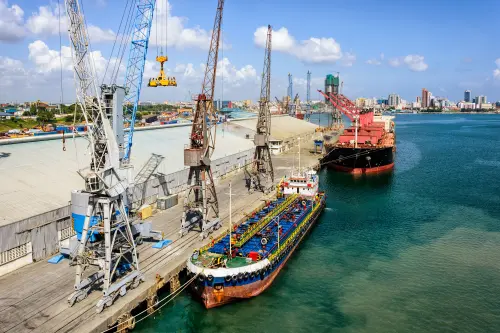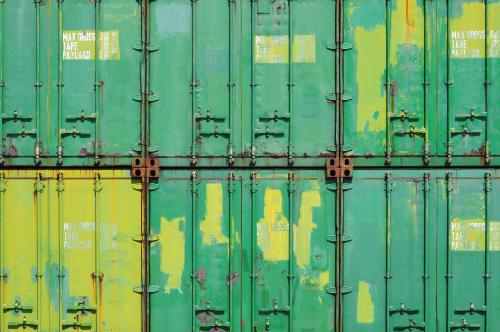Despite the groundswell of popular support expressed for the African Continental Free Trade Area (AfCFTA), concerns have grown about the slow progress of its implementation in recent months. Contrary to expectations, 2021 did not start with a bang, but with skepticism among senior trade officials, which also spilled over to the private sector. Trading was put on hold as negotiations dragged on, particularly on rules of origin and tariff schedules—an indictment that technical level processes had not kept pace with the political decisions.
What, then, should happen to take the AfCFTA to the next stage to become a functional agreement? We propose the following:
1. Don’t wait for the conclusion of the negotiations.
As per the decision of the trade ministers in February 2022, trade should not wait until the outstanding rules of origin surrounding textiles and clothing, automobiles, and sugar (which constitute only around 12 percent of the total traded products) are resolved. It would be relatively easy for customs officials to exclude these items (on a temporary basis) from benefiting from the AfCFTA tariff reductions. Meanwhile, the outstanding negotiations should be fast-tracked by adhering to the new work program for completion this year.
2. Focus initially on the largest continental traders.
Studies concur that large companies are responsible for the bulk of trading globally (e.g. Freund, 2016 and OECD, 2017). This is true on the African continent too—exports tend to be highly concentrated, with a few “super exporters” dominating trade volumes (Matthee et. al., 2018). According to a study undertaken by United Nations Industrial Development Organization using transaction-level trade data over the period 2009-2013, the top 1 percent of trading firms in Africa account for over 75 percent of the total value of exports (Edwards, 2020). Given this degree of concentration, governments and business associations should form representational groups to allow these larger companies to address the challenges that they confront in cross-border trade. In this way, they could form a powerful body to pressure for full implementation of the AfCFTA, much as larger companies did in the creation of the European Single Market in the 1980s and 1990s (Mold, 2021).
3. Prioritize the elimination of barriers to imports.
The perception among a lot of observers and African Union member states is that the AfCFTA is essentially about promoting exports. But in fact, it is just as much about promoting imports—every additional U.S. dollar’s worth of intra-African exports must be matched by a dollar of intra-African imports. Indeed, in all the simulation work carried out on the AfCFTA, the calculation of welfare benefits hinges on larger (and cheaper) volumes of imported goods and services (See Abrego et. al (2020) for a discussion of the way the different studies calculate the welfare benefits). A further consideration is that several African countries enjoy sizeable positive trade balances with the rest of the continent and can thus manage the political economy of immediately increasing their imports from the rest of the continent (Table 1).
Table 1: Countries with largest positive intra-African trade balances (> $100 million), 2019 (merchandise trade only)
| Exports | Imports | Trade balance | |
| South Africa | 23,803 | 10,309 | 13,494 |
| Nigeria | 9,561 | 2,642 | 6,919 |
| Egypt | 4,385 | 1,840 | 2,545 |
| Djibouti | 2,260 | 311 | 1,949 |
| Congo, Dem. Rep. of the | 3,946 | 2,805 | 1141 |
| Senegal | 1,672 | 938 | 734 |
| Algeria | 1,958 | 1,271 | 687 |
| Tanzania, United Republic of | 1,767 | 1,332 | 435 |
| Eswatini | 1,849 | 1,464 | 385 |
| Togo | 584 | 246 | 338 |
| Angola | 1,819 | 1,486 | 333 |
| Benin | 771 | 580 | 191 |
| Morocco | 2,054 | 1,864 | 190 |
| Mauritania | 477 | 322 | 155 |
Source: Calculated from UNCTADStat (2021).
4. Initiate more public awareness campaigns.
To provide a coordinated response to the new trade and investment opportunities opened by the AfCFTA, with the assistance of the United Nations Economic Commission for Africa and other international organizations, signatory states have been developing national and regional AfCFTA strategies–over 45 of Africa’s 54 AfCFTA signatories have either completed or are in the process of completing them. While important documents, they have nonetheless remained largely confidential in many countries. Greater consideration should be given to publicizing these strategies through social and traditional media platforms to raise awareness about the AfCFTA among all stakeholders (e.g., chambers of commerce, private sector associations, and the general public).
5. Take some simple operational steps.
There are some simple operational steps that could be taken to visibly accelerate AfCFTA implementation. For instance, the logistics and supply chain industry could be encouraged to use AfCFTA documents for their operations. Similarly, customs authorities can insist on companies registering for exportation under the AfCFTA rules of origin. Member states of regional economic communities with functioning free trade areas like the Common Market for Eastern and Southern Africa, East African Community, Economic Community of West African States, and the Southern African Development Community can immediately agree to add the AfCFTA logo to the customs documents used for regional trade. This will demonstrate to all traders that the AfCFTA is operational.
6. Lead by example.
There needs to be a “demonstration effect” once the AfCFTA is implemented to prove that it can quickly foster greater intra-African trade. As pointed out by Mold (2020), a lot of the countries that have already ratified the agreement have contiguous borders. Tariff reductions could quickly lead to enhanced trade between these neighboring countries. Which leads to our final point…
7. Showcase success stories.
The next mid-year African Union Summit, to be held in July, can inject further impetus into the AfCFTA by showcasing the continent’s readiness to trade. Countries that have put in place the documents and procedures for processing consignments under the AfCFTA regime should be publicly acclaimed to the world as open to do business. The summit should stress the importance of value addition and diversification in intra-Africa trade, and direct regulatory (especially customs) authorities to operationalize the export and import procedures of the AfCFTA.
This list is not exhaustive and there are surely many other things that the AfCFTA institutions, member states, private sector groups, and other stakeholders can do to accelerate the implementation of the AfCFTA. The important thing is to maintain the momentum. Regional integration is like riding a bicycle–if momentum is lost, you fall off. The key is not to lose sight of the long-term goal to liberalize intra-African trade and investment over the course of the next decade and continue to make purposeful steps in the right direction.
Note: The views expressed herein are those of the authors and do not necessarily reflect the views of the United Nations nor the AfCFTA Secretariat.






Commentary
7 ways to accelerate implementation of the AfCFTA
What should be done now?
June 13, 2022